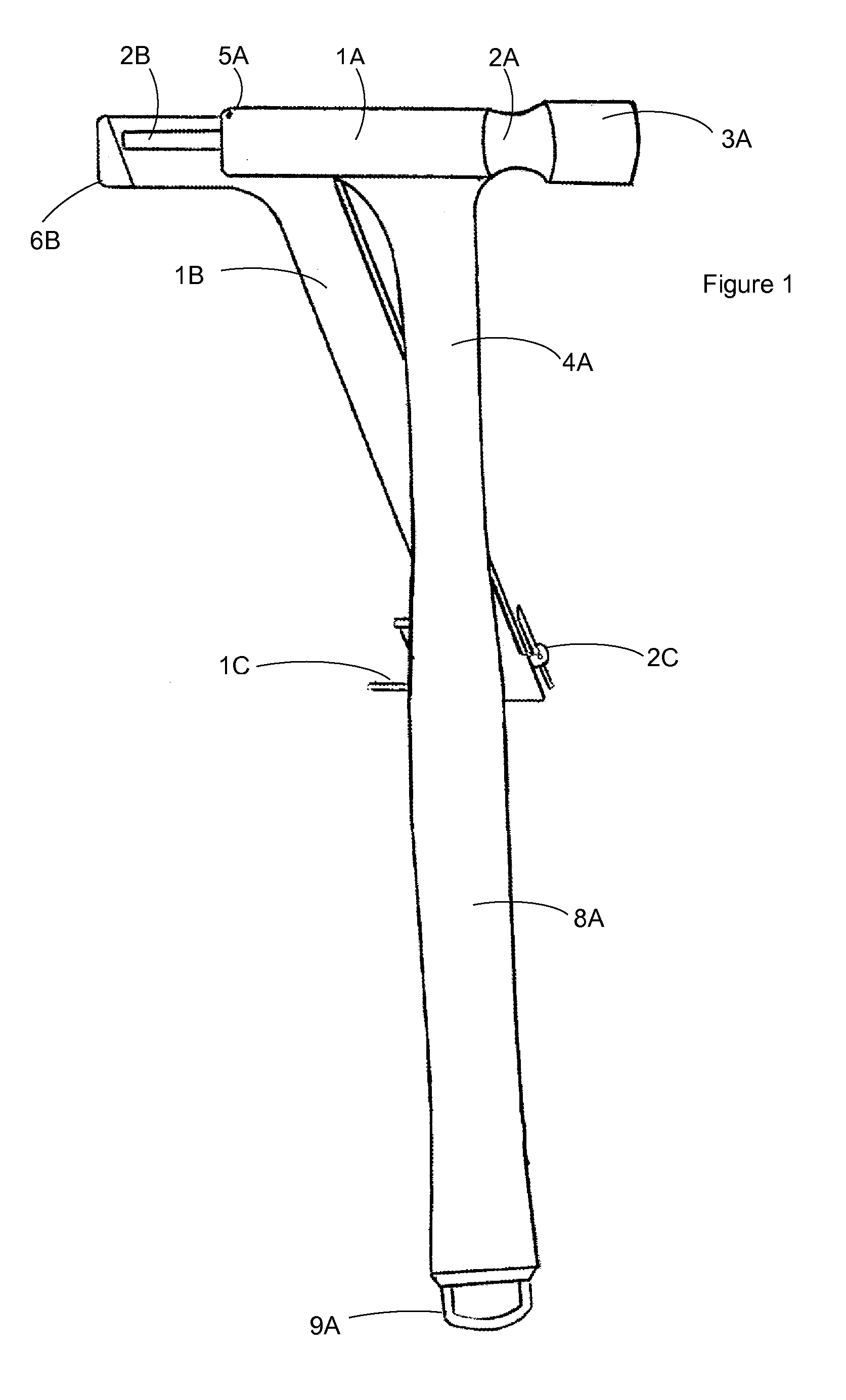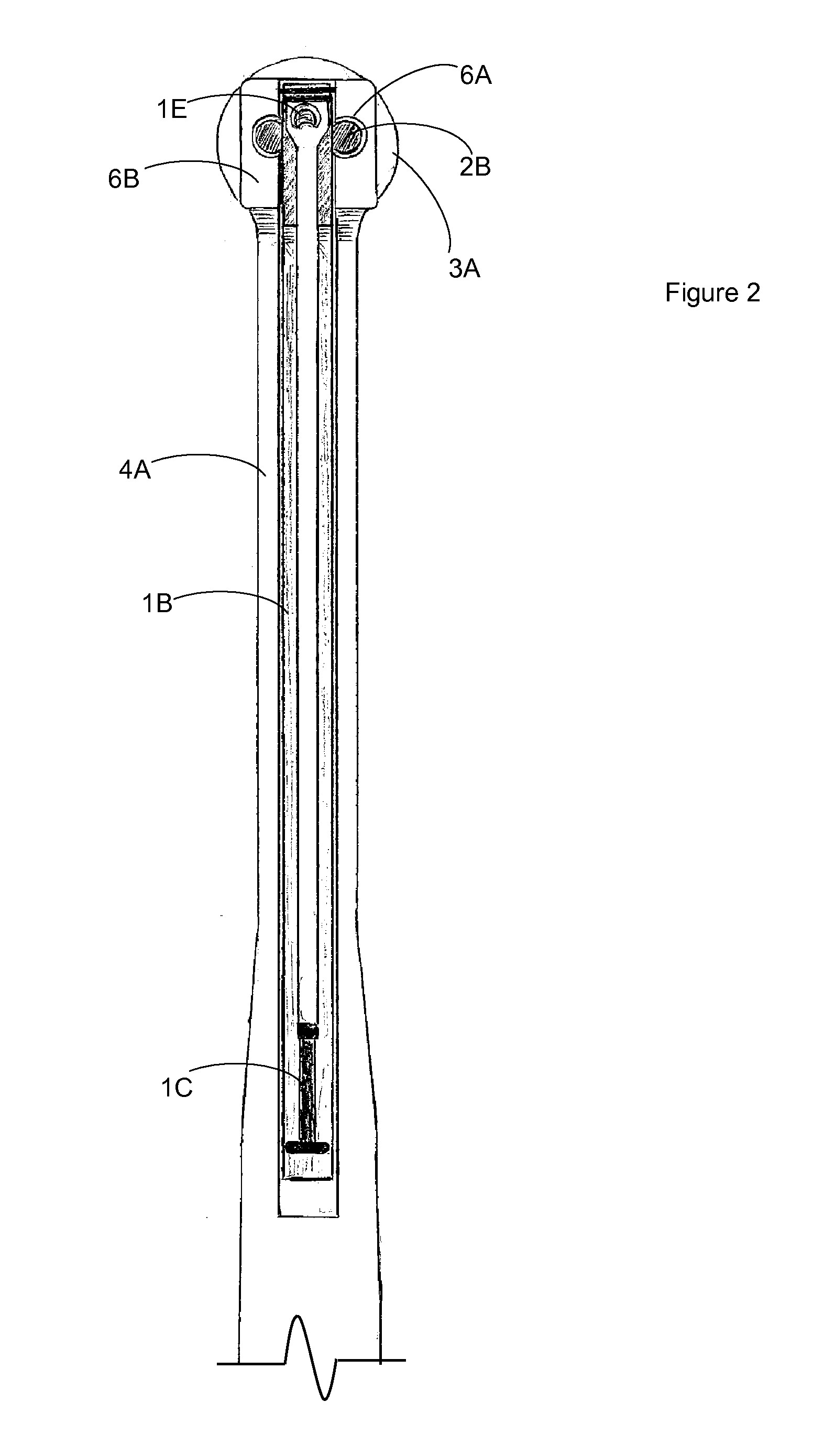Automatic Hammer
a technology of automatic hammer and hammer head, which is applied in the direction of nailing tools, packaging, stapling tools, etc., to achieve the effect of efficient installation of fasteners and minimal effor
- Summary
- Abstract
- Description
- Claims
- Application Information
AI Technical Summary
Benefits of technology
Problems solved by technology
Method used
Image
Examples
Embodiment Construction
Process of Making Automatic Hammer
Forming the Automatic Hammer Body (1A), Inertia Device Plunger Stop Lever (2D), Nail Driver (1E), and Guide Rails (2B)
[0042]The head is made by a process called hot forging. A length of steel bar is heated to about 2,200-2,350° F. (1,200-1,300° C.). This may be done with open flame torches or by passing the bar through a high-power electrical induction coil.[0043]The hot bar may then be cut into shorter lengths, called blanks, or it may be fed continuously into a hot forge. The bar or blanks are positioned between two formed cavities, called dies, within the forge. One die is held in a fixed position, and the other is attached to a movable ram. The ram forces the two dies together under great pressure, squeezing the hot steel into the shape of the two cavities. This process is repeated several times using different shaped dies to gradually form the hammer head. The forging process aligns the internal grain structure of the steel and provides a much ...
PUM
 Login to View More
Login to View More Abstract
Description
Claims
Application Information
 Login to View More
Login to View More - R&D
- Intellectual Property
- Life Sciences
- Materials
- Tech Scout
- Unparalleled Data Quality
- Higher Quality Content
- 60% Fewer Hallucinations
Browse by: Latest US Patents, China's latest patents, Technical Efficacy Thesaurus, Application Domain, Technology Topic, Popular Technical Reports.
© 2025 PatSnap. All rights reserved.Legal|Privacy policy|Modern Slavery Act Transparency Statement|Sitemap|About US| Contact US: help@patsnap.com



